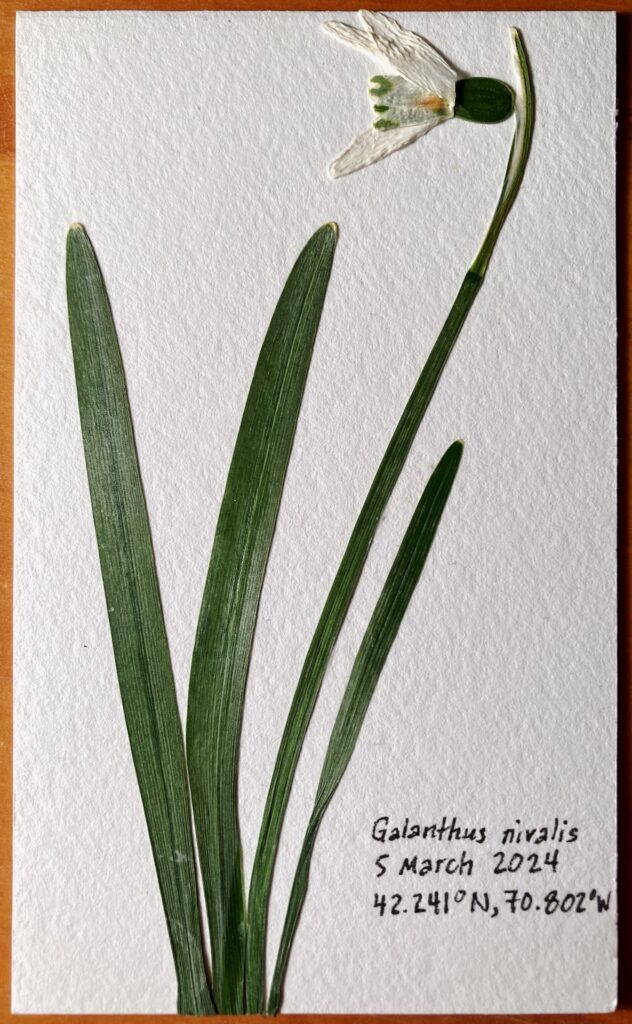Back in early March, I wrote about how to make a cheap pocket plant press, showing a Common Snowdrop (Galanthus Nivalis) in the press. I finally got around to mounting the prseed plant, and here’s what the finished product looks like:

I used polyvinyl acetate (PVA) glue (Elmer’s Glue) to mount the pressed-and-dried plant onto a piece of cardstock. PVA glue dries fairly clear, is reasonably non-acidic and flexible, will fill small gaps, and is cheap, making it a good choice for gluing dried plants to a base.
If you’re mounting a plant for an herbarium, you’d include the whole plant, roots and all. But I’m doing this for fun, so I didn’t include the roots. I mounted the plant with a bit of the stem extending off the cardstock. Then when the glue dried, I used a sharp knife to trim the stems at the edge of the card. Notice how I glued the petals down so that the inner parts of the flower are visible.
The end result is attractive, and even though it’s scientifically useless, I’m happy to have it for my own reference. I’m thinking of making a somewhat larger cheap pocket plant press — maybe 4 x 6 inches (10 x 15cm) — for slightly larger flowers.
As always, don’t collect plants unless you have permission to do so. These days, written permission is typically required for collecting on most federal lands (including national parks, Forest Service land, and often even BLM land), on many state lands, on nearly all wildlife sanctuaries, etc. — don’t collect unless you’re sure you’re allowed to do so. If it’s in your back yard or you know the landowner personally, you should be fine. PLUS, never collect rare or endangered plants, and never collect more than about 5% of a given species in a given location. The only exception would be invasive plants — e.g., here in Massachusetts, go ahead and collect all the Purple Loosestrife, Yellow Iris, Rosa Multiflora, etc., that you want.
